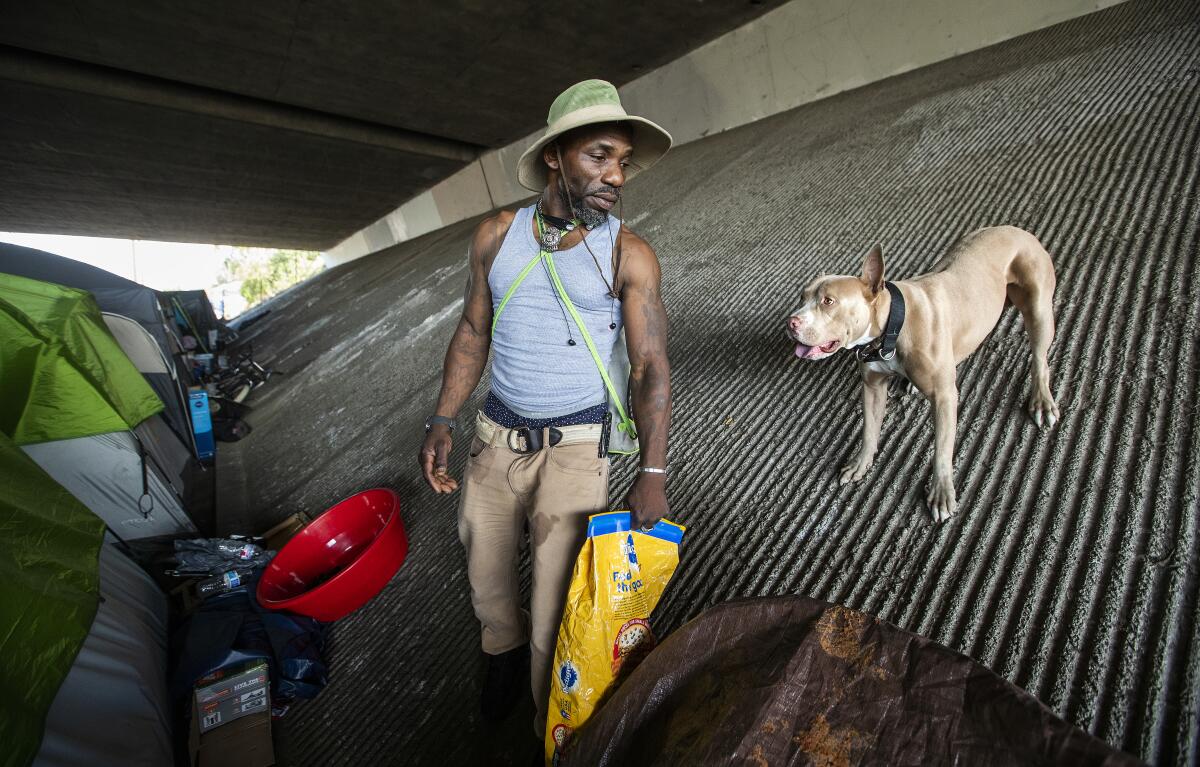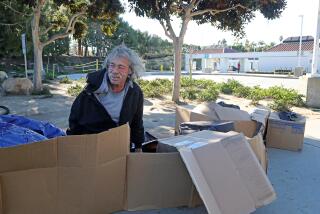Editorial: Will an L.A. street engagement strategy really get homeless people housed? Don’t count on it

When a sweeping anti-camping ordinance to ban homeless people from bedding down in a variety of outdoor locations was passed last summer by the Los Angeles City Council, the goal, council members insisted, was to house people — and to clear the streets. They had been inundated with complaints from constituents about homeless people taking over sidewalks and parks and creating a profusion of trash.
The same day the council members took the first of two votes on the anti-camping ordinance, they also vowed to create a street engagement strategy that would ensure homeless people would get outreach and offers of housing before any sidewalk was cleared.
The originally proposed strategy would have restricted council members to enforcing an anti-camping ban at one site per district to start, and required them to carry out up to four months of methodical outreach to homeless people to get them into housing. But that plan, championed by now-suspended Councilman Mark Ridley-Thomas, was eventually jettisoned by council members who thought it would slow down their plans to clear streets of homeless people.
In its place council members put a series of steps with a much shorter timeline. Now, when council members introduce a location to be targeted for a camping ban, the Los Angeles Homeless Services Authority has about a month before full council approval to do an initial assessment of the people living in the location and, along with service providers, offer whatever housing is available. Council staff and service providers report in once a week to the city homelessness coordinator. Then 14 days later signs go up declaring the location off-limits to camping. Six weeks is a breakneck speed for housing homeless people.
But, technically, council members don’t even have to succeed at the strategy — at getting people off the street — to get council approval to ban camping. They just have to go through the motions.
To their credit, some council members who put in locations for anti-camping bans had already been overseeing outreach for weeks if not months at those locations. Councilman Kevin de León said that hundreds of people living in six recently approved locations for camping bans in his district had already been temporarily housed in hotel and motel rooms and tiny homes.
Similarly, Councilman Bob Blumenfield, who introduced 26 sites in his San Fernando Valley district, has had service providers working at those locations for months, and even a couple of years in some cases, he says. Currently there are about 16 people who still need housing across those locations, he says.
And San Pedro Councilman Joe Buscaino, who introduced a staggering 171 locations for anti-camping bans, has also had extensive outreach and housing done at many of those locations. So far, only 11 of his locations have been approved by the council — and there were few if any homeless people at those locations, according to his staff. The other locations the councilman submitted are being prioritized and will not be rushed through the engagement process in 30 days, his staff said. Council President Nury Martinez’s staff says outreach has been ongoing for months at the 15 locations that she submitted. And even after approval by the council, outreach continues.
Some City Council members want to put up no-camping signs at locations where no homeless people are camping, to prevent them from camping there. Those include the sites around existing housing for homeless people, schools and day-care centers.
So far, 293 camping bans across the city have been introduced and 125 have been approved. (A handful of council members have proposed no sites in their districts.) Very few anti-camping signs have gone up — because, essentially, they are not available yet. But the Bureau of Sanitation, which has a separate notice process, can start cleanings on these sites. That always pushes homeless people off the sites at least temporarily.
It’s great that outreach and housing efforts are already going on at some of these locations. But ultimately, the street engagement strategy is just a cover for enforcing an anti-camping law.
There is really only one way to humanely get homeless people off sidewalks and out of parks and underpasses — and that is by offering them transitional housing that leads to a permanent home. All of this is tremendously challenging — mostly because of the severe lack of permanent housing. And if the council ignores this crucial step as it pursues camping prohibitions across the city, it is simply pushing people from one sidewalk to another.
More to Read
A cure for the common opinion
Get thought-provoking perspectives with our weekly newsletter.
You may occasionally receive promotional content from the Los Angeles Times.










